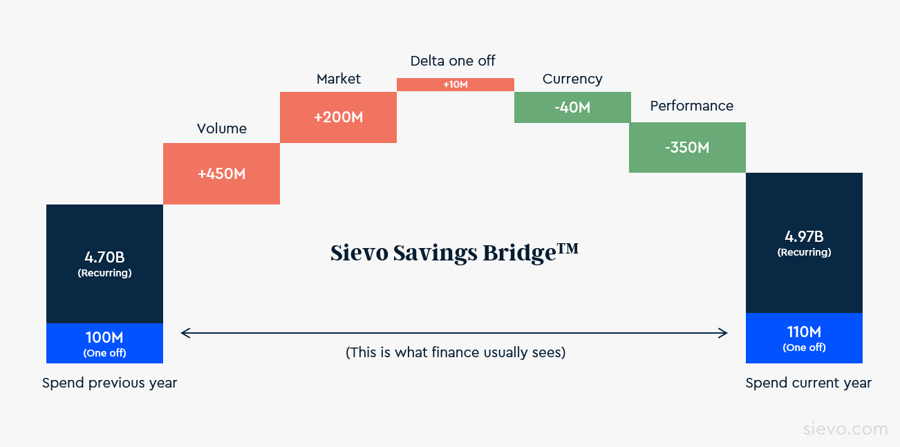One of our most-read eBooks, Procurement Loves Finance, is about building and nurturing the relationship between procurement and finance.
One key element there is trust between these parties. Trust comes from mutually agreed definitions (what savings are) and fact-based figures aligned with the shared definitions.
When we go to the topic of Procurement Savings, the first thing to do is to define what it exactly means.
For me, this refers to how much is currently paid for a certain good or service compared to what has been spent on the same commodity before. On top of that, it is also on how the world has evolved around what has been one’s personal contribution to that change.
Sounds simple, isn’t it? Let’s dig in a bit deeper.
See how savings can be communicated with the right data insights.
How are savings measured?
The core components in measuring savings are:
- How much are we spending on this product now?
- What is the unit price?
- How much are we buying (volume)?
- How did we spend last year?
- What was the price?
- How much did we buy?
So far very clear cut. Based on this, we can easily measure what portion of the change in spending is caused by price and volume (not a bad thing, but if the business is booming, we need to feed the demand). However, because we are not living in an isolated bubble, there are external factors that affect our business:
- How have the currency rates developed from last year?
- Something that, as a procurement organization, we have minimal possibility to control but can sometimes cause significant changes in our spending.
- What has happened to the market commodity prices?
- Quite often, at least part of your purchases depend on global commodity / raw material prices. For example, Metals, Chemicals, Oil, Food products, and so forth are sometimes volatile due to global demand and supply. This affects the prices we pay directly or indirectly and is also not in our control.
As external factors also impact purchase prices, we need to consider those when measuring procurement savings.
They might result in cost increases or give us ‘unearned’ benefits, so we need to understand their impact to build a trustworthy picture of how we are doing as a procurement organization.
The SavingsBridge
To answer this challenge, we have created a solution that we call SavingsBridge™.

In a nutshell, we take the data and split the spend change into the above-mentioned components. As a result, you have a complete view of your procurement savings and the contribution that procurement has made to improve the company’s bottom line.
It is based on facts and bottom-up calculation, making the results reliable and easy to communicate. One can also do a deep dive into the transactional level to gain further justification on where the figures come from.
Savings visibility
Perhaps the most important part of the whole process is that it is not a one-off exercise done by an external consulting agency which is usually already outdated once published.
By doing this every month, you have a robust tracking and communication tool between Procurement and Finance on what has been done and what the procurement contributes to the bottom line at the end of the day.
The fact that it’s automated and works with a few clicks is just the cherry on top.
The model is based on our more than a decade of extensive experience working with procurement organizations in different industries and global settings.
Learn more about how to bring Finance and Procurement closer.



